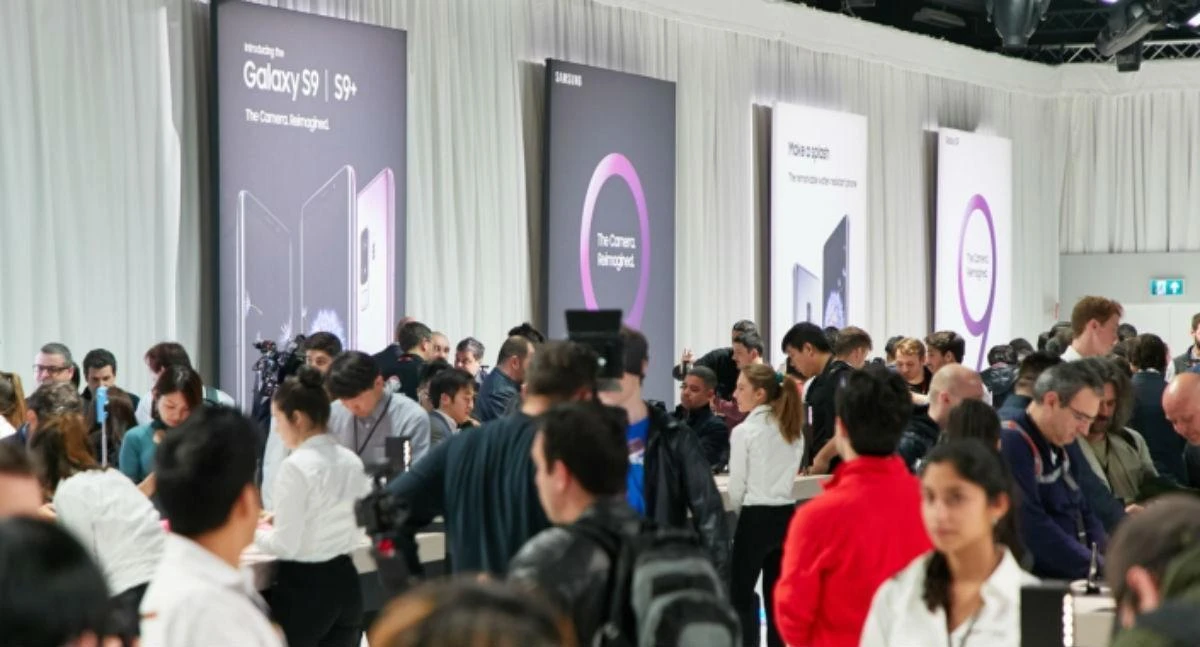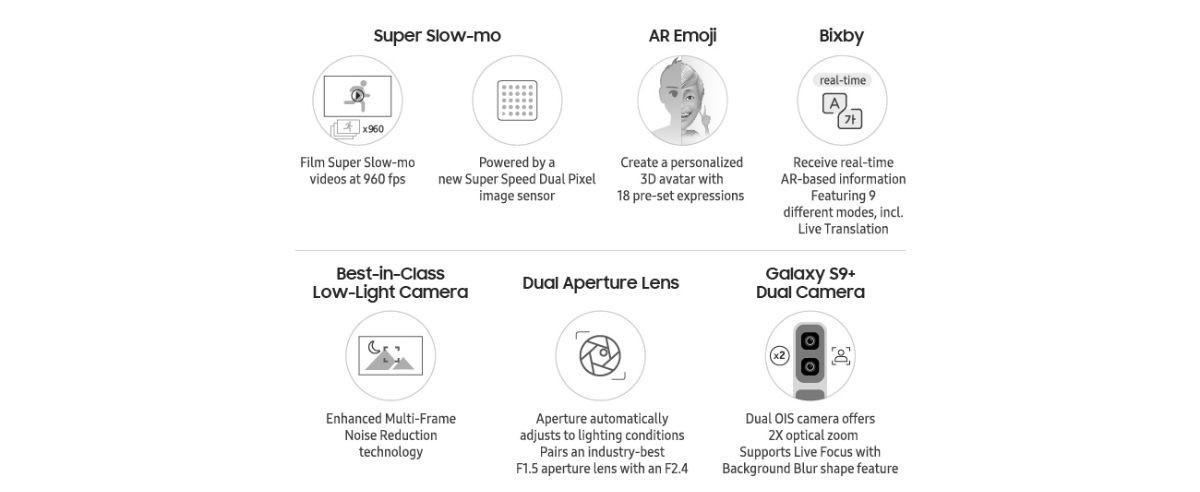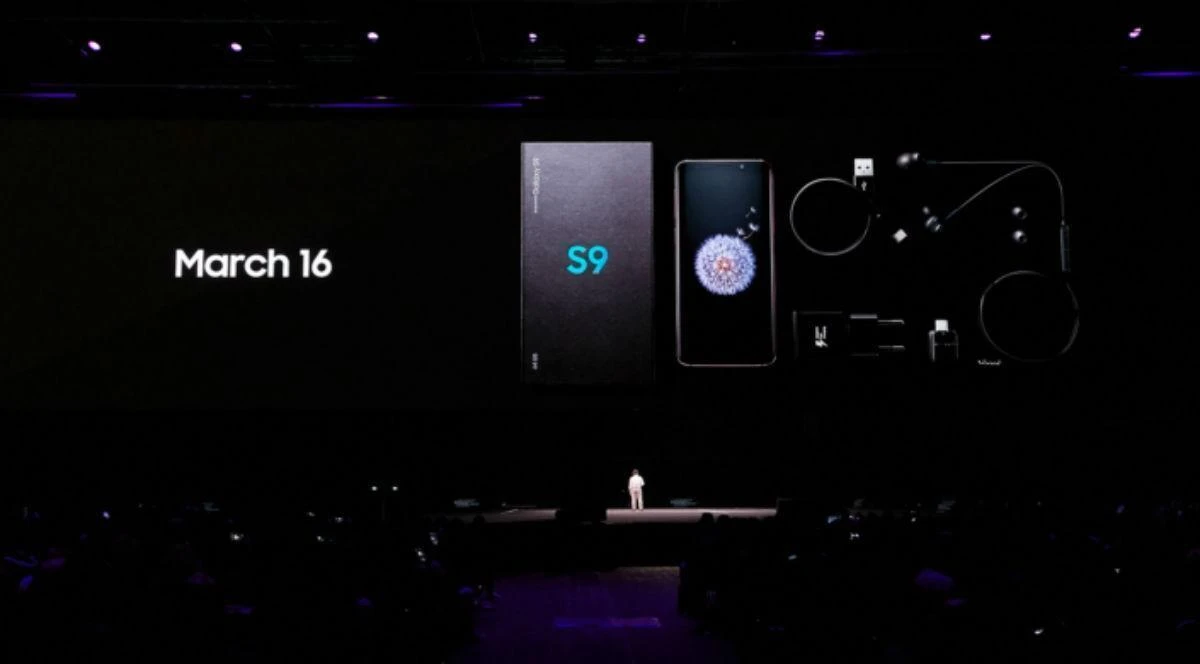
Samsung has officially unveiled the Samsung Galaxy S9 and S9+. The first thing that’s immediately noticeable upon picking up a Galaxy S9 or Galaxy S9+ is just how similar they are to their predecessors. The same 5.8- and 6.2-inch displays (for the S9 and S9+ respectively) dominate the devices’ front; an aluminum strip goes around the edges, and a glass back shimmers.
The fingerprint sensor now comfortably sits below the camera, there’s a new Lilac Purple, and apart from that it looks identical t the S8 and S8+.
The similarities between the two pairs of phones — if you compare the S8 and S8+ to the S9 and S9+ respectively — don’t end there, however.
Those “infinite display” panels are still QuadHD, but Samsung has consistently had some of the very best panels on the market, so there are slight improvements in brightness and colour accuracy of the S9’s.
The S9 also retains the 3000mAh battery its predecessor had (3500mAh for the S8+/S9+), 64GB of storage, and 4GB of RAM for the base model — the S9+ has 6GB.
The most notable S9 and S9+ upgrades are in the processor, which is now the Snapdragon 845, the Note 8’s iris scanner, which can be used for face unlocking, and a new pair of stereo speakers, tuned by AKG.
Perhaps the biggest difference is not between the old and the new models, but between their respective gaps. The Galaxy S8 and S8+ were almost identical last year, whereas 2018’s Galaxy S9 and S9+ differ from each other more significantly. There are four distinctions: Screen, battery, RAM, and camera.
The screen is 0.4 inches larger or the S9+, which is a nice real estate bump considering that the difference in size is negligible, at least in hands.
The battery is a full 500mAh larger (3000 vs 3500), which could translate in a solid battery life difference; and the extra 2GB of RAM, too, might come in handy as apps get bigger and the device’s battery wears off over time.
But the major difference is still the secondary 12MP telephoto camera, which is only present on the larger S9+.
The dual-lens system is borrowed from last year’s Galaxy Note 8, and Samsung again uses it to offer 2x zoom photos without quality loss and some bokeh effects to enhance portrait mode pictures.
https://www.youtube.com/watch?v=1Kd05k6Z_Fw
“The way we use our smartphones has changed as communication and self-expression has evolved,” said DJ Koh, president and Head of IT & Mobile Communications Division, Samsung Electronics.
“With the Galaxy S9 and S9+, we have reimagined the smartphone camera. Not only do the Galaxy S9 and S9+ enable consumers to shoot great photos and videos anywhere, it’s a smartphone that’s designed to help them connect to others and express themselves in a way that’s unique and personal to them.”
It’s all about tha Camera

Today’s cameras are for more than taking pictures – they’re for connecting and communicating. Consumers want a smartphone camera with state-of-the-art technology, so they can express themselves with high-quality images and tools to tell their own, unique story. The Galaxy S9 and S9+ cameras are built with these consumers in mind, with a Super Speed Dual Pixel sensor with dedicated processing power and memory to take amazing shots with high photo quality.
The Galaxy S9 and S9+’s camera features include:
Super Slow-mo: Make every day moments epic with dynamic, slow-motion video that captures 960 frames per second. The Galaxy S9 and S9+ also offer automatic Motion Detection, an intelligent feature that detects movement in the frame and automatically begins to record – all users have to do is set up the shot. After capturing the Super Slow-mo video, users can select background music from 35 different options or add a tune from their favorite playlist. Users can also easily create, edit and share GIF files with a simple tap in three playful styles of looping to watch the action over and over again.
https://www.youtube.com/watch?v=z4LXuz3Mj-0
Low Light Camera: Good lighting is the secret to any great photo. But often, photos are taken in less-than-ideal lighting conditions and most smartphone cameras have a fixed aperture that can’t adjust to low or bright lighting environments resulting in grainy or washed out pictures. Similar to the way the iris of a human eye expands and contracts, Samsung’s Dual Aperture2(F1.5 / F2.4) automatically lets in more light when it’s dark and less light when it’s too bright, taking photos that are crisp and clear.
The main sensor — identical on both phones — still maxes out at 12MP, but the lens itself has been re-engineered from the ground up. And it now offers something of a first for smartphone cameras: A mechanical aperture.
Smartphone sensors are so small that phone companies have stuck with fixed camera apertures, and worked on things such as auto-focus technologies, dual pixels, and second lenses to improve the quality of pictures.
But the Galaxy S9’s dual aperture allows it to go as wide as f/1.5 — an ultra-wide aperture that lets in a lot of light and will come in handy for low-light situations — or keep sharper detail at f/2.4.
The camera will automatically switch between the two according to how much light there is, but a Pro mode will allow you to tweak most settings — like ISO and white balance, other than aperture — if you want to.
The mechanical nature of the aperture’s change, much like on DSLR cameras, means that you can actually see the difference for yourself, with the camera opening and closing its eye at the tap of a button.
There was no way of properly testing the rear shooter in the dim and chaotic setting of Samsung’s venue in Barcelona, but the camera is insanely fast and its app is clean and cleverly designed.
The inclusion of a changeable aperture is, in and of itself, a remarkable achievement — one which we will likely see more of as 2018 smartphones keep getting unveiled.
The front camera, on the other hand, hasn’t changed — both the S8/S8+ and S9/S9+ have the same f/1.7 8MP camera.
What has changed is what it’s used for, with Samsung’s introduction of AR (augmented reality) emoji.
AR Emoji
Samsung lets users create an emoji that looks, sounds and acts like them. AR Emoji uses a data-based machine learning algorithm, which analyzes a 2D image of the user and maps out more than 100 facial features to create a 3D model that reflects and imitates expressions, like winks and nods, for true personalization. AR Emoji shares users’ real-life emotions not only in video but also with a range of stickers and uses a standard AGIF file format so users can share their emojis across most third-party messaging apps.
https://www.youtube.com/watch?v=3Hla9LsYfrg
Of course, Bixby is still here. Samsung’s intelligence platform, integrated into the camera, uses augmented reality and deep learning technologies to provide helpful information about a user’s surroundings. With real-time object detection and recognition, Bixby instantly generates information directly on top of the image that the camera is pointing at. Users can translate foreign languages and currency in real time with Live Translation, learn about their surroundings, purchase products seen in the real world.
As the first smartphone to support the new SmartThings app, the Galaxy S9 and S9+ are the central hub to manage every facet of the connected lifestyle at home, at the office or on the go. The SmartThings app will be introduced with the Galaxy S9 and S9+ and will connect to other Samsung and non-Samsung devices.
The Galaxy S9 and S9+ will be available starting in March 16, 2018 in select markets and will be offered in Midnight Black, Titanium Gray, Coral Blue and a new hue, Lilac Purple.



